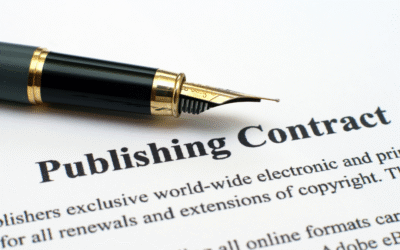Concept Development
A crucial step in successful book writing is the concept development phase. This is where the initial idea for the book takes shape and starts to mold into a potential bestseller. Concept development involves brainstorming ideas and identifying a niche for your book that will set it apart from the competition.
Brainstorming Ideas
Ideas are the fuel for any successful book. To start the concept development process, set aside time for brainstorming sessions. Whether you prefer to jot down ideas in a notebook, use mind maps, or bounce ideas off a trusted friend or colleague, the goal is to generate as many potential book ideas as possible. No idea is too wild or too outlandish at this stage. The key is to let your creativity flow and explore different angles and possibilities.
Niche Identification
Any successful book has a niche that it caters to. Identifying a niche for your book is crucial to its success. With the market becoming increasingly saturated, standing out in a specific niche is more important than ever. When identifying a niche, consider the target audience, the unique angle or perspective you can bring to the topic, and the potential demand for such a book in the market. This will help you align your book concept with a specific niche that has the potential for success. Keywords such as market demand, target audience, and unique perspective are crucial in niche identification.
Key Takeaways:
- Develop a strong concept: Before starting to write, it’s important to have a well-defined and unique idea for your book. This will help grab the reader’s attention and set your book apart from others in the market.
- Create a structured plan: Successful authors often have a clear plan for their writing process, including setting specific deadlines and goals. Having a structured outline can help keep you on track and prevent writer’s block.
- Commit to consistent, quality writing: Writing a bestseller takes dedication and discipline. It’s important to set aside regular time for writing and to focus on producing high-quality content that resonates with your target audience.
Outlining Process
The outlining process is a crucial step in the journey from idea to bestseller. It is where the structure of your book begins to take shape, and where you start to see how your ideas will fit together to create a compelling narrative. The outlining process helps to ensure that your book has a clear and logical flow, and that you don’t get lost or overwhelmed as you write.
Chapter Framework
An effective chapter framework is essential to the success of your book. It provides the backbone of your narrative, guiding the reader through the story or information in a way that keeps them engaged and wanting more. A strong chapter framework is built on a clear understanding of your book’s overall purpose and goals, and it helps you to stay focused and on track as you write.
Narrative Flow
On the topic of narrative flow, it’s important to consider how your story or information will unfold for the reader. Narrative flow refers to the pacing, rhythm, and sequencing of events or ideas within your book. A smooth and cohesive narrative flow keeps the reader engaged and eager to continue reading, while a disjointed or confusing flow can lead to a negative reading experience.
Narrative flow is crucial to the success of your book, and it’s worth taking the time to carefully craft and refine it. Keywords such as pacing, rhythm, and sequence play a vital role in creating a compelling narrative that keeps the reader hooked from start to finish.
Research Essentials
Now, let’s dive into the essential research that every successful book writer must undertake. Research is the cornerstone of any successful writing project, and getting it right lays the foundation for your book’s success. From factual accuracy to supporting data, thorough research is crucial every step of the way.
Factual Accuracy
Research for factual accuracy is non-negotiable when it comes to successful book writing. Whether you are writing fiction or non-fiction, ensuring that the details and information presented in your book are accurate is paramount. This involves fact-checking, cross-referencing multiple sources, and verifying the credibility of your information. Inaccurate information can not only damage your credibility as an author but also misinform and mislead your readers, leading to negative reviews and a loss of trust.
Supporting Data
Supporting data is another crucial aspect of research when writing a book. This includes gathering statistics, case studies, expert opinions, and any other relevant data that supports and strengthens the points you make in your book. Good supporting data not only adds credibility to your arguments but also enhances the overall quality of your book, making it more persuasive and influential.
This involves conducting thorough literature reviews, interviews, and in-depth analysis of your chosen topic. A book with well-supported arguments and data-backed claims is more likely to resonate with readers and stand the test of time.
Writing Discipline
Not everyone can sit down and effortlessly churn out a bestselling book. It takes discipline to stay focused and dedicated to the task at hand. Without a rigorous writing routine, the journey from idea to bestseller becomes much more difficult.
Regular Schedules
Discipline is essential when it comes to maintaining regular writing schedules. Setting aside specific blocks of time each day or week for writing can help create a consistent writing habit. Whether it’s waking up early to write before starting the day or dedicating a few hours every evening to the craft, a regular schedule can increase productivity and keep the writing momentum going.
Target Word Count
One of the ways to maintain writing discipline is by setting a target word count for each writing session. Knowing how many words you need to produce can help keep you on track and focused. It also provides a sense of accomplishment once you reach your goal, motivating you to continue making progress on your book.
To achieve writing discipline, setting a reasonable target word count can be beneficial. It helps to manage time effectively and measure progress as you work towards completing your manuscript.
Character Creation
After you’ve come up with the initial concept for your book, the next step is to create the characters who will bring your story to life. Building compelling and relatable characters is essential to the success of your book, and it requires careful thought and planning.
Personality Profiling
An important aspect of character creation is personality profiling. You need to delve deep into your character’s psyche and understand what makes them tick. What are their fears, desires, and motivations? Think about their strengths and weaknesses, and how these will drive the plot forward. By creating well-rounded and believable personalities, you will draw readers in and make them emotionally invested in your characters’ journey.
Backstory Building
Any compelling character has a rich and complex backstory. This includes their upbringing, experiences, and the events that have shaped who they are today. Building a solid backstory will help you understand your characters on a deeper level and will inform their actions and decisions throughout the story. It will also add depth and complexity to your narrative, making your characters more multi-dimensional and engaging to readers.
Plus, developing a backstory can help you uncover hidden motivations and conflicts for your characters, contributing to a more intricate and captivating plot.
World-Building Techniques
Not all bestselling books are set in the real world. Many successful authors create their own fictional worlds, complete with unique cultures, landscapes, and rules. World-building is the process of constructing an imaginary setting that is believable and immersive, and it is a crucial technique for writers of fantasy, science fiction, and other speculative genres.
Setting Realism
An essential aspect of world-building is creating a setting that feels real and authentic, even if it is entirely imaginary. Attention to detail, consistency, and logic are key to achieving setting realism. Whether your story takes place in a distant planet, a magical realm, or an alternate version of our own world, the setting should have its own history, geography, and societal norms that make sense within the context of the story. This level of groundedness helps readers suspend their disbelief and fully immerse themselves in the world you have created.
Cultural Elements
The cultural elements within a fictional world are just as important as the physical settings. Unique languages, traditions, and belief systems can add depth and richness to your world, making it feel vibrant and alive. The cultural aspects of world-building are opportunities to explore complex themes and ideas, and they can provide a rich backdrop for your characters and their conflicts.
Realism in cultural elements means developing social structures, customs, and practices that are consistent with the world you have created. By grounding your cultural elements in a sense of authenticity and credibility, you can make your world feel fully realized and compelling to your readers.
Drafting Stage
Keep in mind that the drafting stage is where the foundation of your book is laid. This is where the first seed of your idea begins to grow and take shape. It is crucial to approach this stage with diligence and patience, as it will set the tone for the entire writing process.
First Rough Draft
Any successful book starts with a messy, imperfect first rough draft. This is the stage where you allow yourself to pour out your ideas onto the page without worrying about perfection. Embrace the imperfection and allow your creativity to flow freely. Remember, the first draft is for your eyes only, so don’t be afraid to make mistakes and take risks.
Consistent Progress
An essential aspect of the drafting stage is consistent progress. Set a daily or weekly writing goal and stick to it. Whether it’s a word count or a specific amount of time dedicated to writing, consistency is key to moving the project forward. Make sure to carve out dedicated time for writing in your schedule and hold yourself accountable for meeting your goals. This will ensure that you make steady progress toward completing your book.
Progress in the drafting stage may be slow and daunting at times, but it is important to remember that every word written is a step closer to achieving your goal. Celebrate small victories and milestones along the way to keep yourself motivated and focused. This stage is also an opportunity to experiment and explore different directions for your book, so embrace the process and trust that your hard work will pay off in the end.
It is crucial to approach the drafting stage with diligence and patience. Embrace the imperfection of the first rough draft and allow your creativity to flow freely. Consistency is key to making progress, so setting and sticking to writing goals is essential for success. Remember to celebrate small victories and milestones to stay motivated.
Revision Strategies
To achieve success in book writing, it is essential to understand the importance of effective revision strategies. Revising your manuscript is a critical step in the writing process, and it can make the difference between a good book and a bestseller. In this chapter, we will explore key strategies for content editing and structural changes that will elevate your book to the next level.
Content Editing
Strategies for content editing involve carefully reviewing the substance of your book. This includes evaluating the clarity of your ideas, the coherence of your arguments, and the consistency of your narrative. As you revise, consider the pacing of your story, the development of your characters, and the effectiveness of your prose. Look for opportunities to strengthen your writing by tightening your language and refining your descriptions. Content editing is an opportunity to ensure that your book communicates its message clearly and effectively.
Structural Changes
Changes to the structure of your book can have a significant impact on its overall quality. Consider the organization of your chapters, the arrangement of your scenes, and the flow of your storytelling. Structural changes may involve reordering your content, adding new sections, or removing unnecessary material. These adjustments can enhance the pacing of your book, create more dramatic tension, and improve the overall reader experience.
A well-executed structural change can elevate your book to a new level, captivating readers and enhancing its marketability. It is essential to approach structural changes with a discerning eye, and to seek feedback from trusted readers or professional editors. By carefully considering the impact of these changes, you can ensure that your book achieves its full potential.
Feedback Gathering
Keep in mind that feedback is an essential part of the book writing process. It allows you to gain valuable insights from others and improve your work before it’s published. There are two main methods for gathering feedback: beta readers and peer reviews.
Beta Readers
Any successful author will tell you that beta readers are a crucial part of the writing process. These are individuals who read your manuscript before it’s finalized and provide feedback on plot, characters, pacing, and more. It’s important to choose beta readers who are part of your target audience and can give you honest and constructive criticism. Their feedback can give you valuable insights and help you identify any weak points in your book.
Peer Reviews
On the other hand, peer reviews involve getting feedback from fellow writers or industry professionals. These individuals can provide insightful feedback on the technical aspects of your writing, such as grammar, structure, and style. Their expertise can help elevate your book to a professional standard and increase its chances of success in the market. It’s important to seek out well-respected peers who can provide valuable input and help you refine your manuscript.
Peer reviews are a valuable part of the feedback gathering process, particularly in terms of improving the technical aspects of your writing. It’s essential to seek out peers with expertise in your genre and who can provide constructive criticism that will help you elevate your book to a professional standard.
Professional Editing
After completing the initial draft of your manuscript, the next crucial step in the book writing process is professional editing. Professional editing is essential to ensure that your book is polished, error-free, and ready for publication. Whether you choose to work with a copy editor or a developmental editor, their expertise will greatly enhance the quality of your book.
Copy Editors
On the path to publishing a bestseller, copy editors play a vital role in refining your manuscript. Copy editors meticulously review your work to correct grammar, punctuation, and spelling errors. They also focus on improving clarity, consistency, and flow within the text. Their keen attention to detail ensures that your book is free from distracting mistakes, allowing readers to fully engage with your story or content.
Developmental Editors
To elevate your book from a mere idea to a potential bestseller, developmental editors are invaluable. They work closely with you to refine the structure, content, and overall vision of your manuscript. Developmental editors provide insightful feedback and guidance on character development, plot progression, and thematic elements, helping to transform your book into a compelling and cohesive work.
Editors also offer suggestions for substantial revisions, helping you enhance the depth and impact of your writing. Their expertise can elevate your book from good to outstanding, making it more appealing to readers and increasing its chances of success in the market.
Polishing Manuscript
Your manuscript is the culmination of your hard work and creativity, and it needs to be polished to perfection before it can become a bestseller. This crucial step involves final revisions and ensuring that your manuscript meets formatting standards for publication.
Final Revisions
One of the most important aspects of polishing your manuscript is conducting final revisions. This involves carefully reviewing your work for any errors in grammar, spelling, and punctuation. Even the smallest mistake can detract from the overall quality of your writing, so it’s essential to be meticulous in your review. Consider seeking feedback from beta readers or hiring a professional editor to ensure that your manuscript is flawless before publication.
Formatting Standards
Formatting standards are another crucial aspect of polishing your manuscript. Formatting your manuscript according to industry standards demonstrates professionalism and makes it easier for publishers to evaluate your work. Pay attention to details such as font, spacing, margins, and chapter headings. Plus, consider the specific guidelines of the genre or publishing house you are targeting to ensure that your manuscript aligns with their requirements.
Cover Design
Now let’s talk about one of the most crucial aspects of successful book writing – cover design. The cover of a book is the first thing that catches a reader’s eye, and a strong, visually appealing cover can make all the difference in catching the attention of potential readers.
Visual Appeal
An eye-catching cover design is essential for grabbing the attention of potential readers. It should be visually appealing, with striking colors, engaging imagery, and clear, easy-to-read text. A well-designed cover sets the tone for the book and can entice readers to pick it up and learn more about its contents.
Genre Conformity
Appeal to the expectations of your target audience by ensuring that your cover design reflects the genre of your book. For example, a romance novel will likely have a different cover design than a mystery thriller. Conformity to genre conventions can help your book stand out to readers who are looking for a specific type of story.
Conformity to genre expectations, combined with eye-catching visual appeal, can make your book stand out on the shelves and attract the right audience.
Title Consideration
Keep in mind that the title of your book is the first thing that will catch a reader’s eye. It needs to be memorable, marketable, and effectively convey the essence of your book. Therefore, the consideration of your book’s title is a crucial step in the process of writing a successful book.
Memorable Titles
An effective title is one that sticks in the reader’s mind long after they have finished the book. It should be unique and attention-grabbing, compelling the potential reader to pick the book up and want to learn more. A memorable title sets the stage for the entire reading experience and can be the key to the book’s success.
Marketability
Titles play a crucial role in the marketability of a book. Titles that are catchy and easy to remember are more likely to attract a wider audience. Consideration should also be given to how the title will look on the cover of the book, and how it will appear in marketing materials. A marketable title can greatly impact the success of the book in a competitive market.
It is important to consider the target audience and genre when choosing a title to ensure that it resonates with potential readers and effectively communicates the content of the book. Additionally, conducting thorough market research to understand current trends and keywords in the industry can help in creating a title that is both marketable and relevant.
Synopsis Writing
After you’ve laid the foundation for your book idea, the next crucial step is to craft a compelling synopsis. A synopsis is a brief overview of your book that captures the essence of the story, main characters, and key plot points. It serves as a tool to pitch your book to agents, publishers, and potential readers, so it’s essential to get it right.
Hook Crafting
For a synopsis to stand out, you need to craft a captivating hook that grabs the reader’s attention from the start. This could be a thought-provoking question, a shocking statement, or a gripping opening scene. The goal is to intrigue the reader and make them want to know more about your book.
For instance, if you’re writing a mystery novel, you might want to open your synopsis with a puzzling scenario that leaves the reader eager to unravel the mystery. Whatever genre you’re working in, the key is to hook the reader and make them invested in your story.
Synopsis Condensation
Synopsis writing is all about condensing your entire book into a brief and captivating summary. This means highlighting the most important and positive details while omitting unnecessary subplots or minor characters. The challenge lies in capturing the heart of your story in just a few paragraphs, leaving readers with a clear understanding of what to expect.
For instance, in a fantasy novel, you might focus on the dangerous quest the protagonist embarks on, the positive relationships they form, and the ultimate dangerous they face, while leaving out smaller details that don’t impact the core narrative.
Marketing Preparation
Your book writing journey doesn’t end with the completion of your manuscript. In fact, it’s only the beginning. Marketing preparation is a crucial step in the process of turning your book into a bestseller. It involves identifying your target audience, creating branding elements, and developing a strategic marketing plan.
Audience Targeting
Preparation for marketing your book begins with identifying your target audience. Understanding who your readers are, their demographics, interests, and needs is essential for developing a marketing strategy that resonates with them. Conducting market research, engaging with potential readers on social media, and analyzing the success of similar books in your genre can help you identify and target your audience effectively.
Branding Elements
Preparation for branding elements involves creating a strong and memorable author brand that resonates with your target audience. This includes designing a professional author website, developing a captivating author bio, and creating a visually striking author logo and book cover. These branding elements should be consistent across all marketing materials, creating a cohesive and recognizable brand that sets you apart from other authors in your genre.
This preparation is vital for building trust and credibility with your audience, and ultimately, driving book sales. It’s important to ensure that your branding elements reflect the tone, themes, and genre of your book, while also showcasing your unique author voice and style. A strong brand can make a positive impact on reader perception and play a key role in the success of your book.
Publication Routes
For any aspiring author, getting their work published is a crucial step in the journey from idea to bestseller. There are several routes to publication, each with its own advantages and disadvantages. Understanding the options available is essential for making an informed decision about how to bring your book to market.
Traditional Publishing
The traditional publishing route involves submitting your manuscript to literary agents or publishing houses for consideration. If accepted, the publisher will take on the responsibility of editing, designing, printing, and distributing your book. This route is the most well-established and can provide authors with strong marketing and distribution support.
The downside of traditional publishing is the stiff competition and long wait times for acceptance. Additionally, authors may have less control over the creative process and earn lower royalties compared to self-publishing.
Self-Publishing
To achieve publication through self-publishing, authors take on the responsibility of editing, designing, printing, and distributing their own work. This route offers authors a higher degree of control and can be a faster way to get their book to market.
Self-publishing, while empowering, comes with its own set of challenges. It requires authors to take on the roles of editor, designer, marketer, and more. Additionally, self-published authors may face stigma and difficulty getting their books into physical bookstores.
Publication through self-publishing can be a cost-effective and efficient way to bring your book to market. It offers complete creative control and the potential for higher royalties compared to traditional publishing. However, it requires a significant investment of time and effort to ensure a successful outcome.
Launch Planning
Despite the hard work and dedication that goes into writing a book, the real work begins when it comes time to plan the launch. Launch planning is a crucial stage in the journey from idea to bestseller. It involves careful consideration of release timing and promotional activities to ensure the book reaches its target audience and achieves success in the market.
Release Timing
An essential aspect of launch planning is determining the right release timing for the book. Timing can make or break the success of a book launch. It’s important to consider factors such as seasonality, current events, and market trends to pinpoint the ideal time to introduce the book to the public. An ill-timed release can result in the book getting lost in the noise of other releases or failing to capitalize on relevant trends.
Promotional Activities
The promotional activities executed during the book launch can significantly impact its success. The implementation of a well-planned promotional strategy is crucial in creating buzz and generating interest among potential readers. For instance, leveraging social media, organizing book signings, and securing media coverage are all powerful promotional tools that can help build momentum for the book’s release.
For instance, leveraging social media, organizing book signings, and securing media coverage are all powerful promotional tools that can help build momentum for the book’s release. Strategic promotional activities can help maximize exposure and sales by reaching a wider audience and generating excitement around the book.
Distribution Channels
For an author, understanding the various distribution channels is crucial to the success of their book. The distribution channels are the pathways through which the book reaches the hands of the readers, and a well-planned distribution strategy can make all the difference in turning an idea into a bestseller.
Retail Partnerships
The retail partnerships are a key component of the distribution strategy, as they allow the book to be stocked in physical stores. The relationship with retail partners is crucial, as they can provide valuable shelf space, promotional opportunities, and access to a wide audience of potential readers. Authors must carefully consider the retail partnerships that will best suit their target audience and genre, as well as negotiate favorable terms to ensure the success of their book in physical stores.
Online Platforms
On the other hand, online platforms have become a dominant force in book distribution, offering authors the opportunity to reach a global audience with ease. The rise of e-commerce has paved the way for authors to sell their books directly to readers through online retailers such as Amazon, Barnes & Noble, and Apple Books. Embracing online platforms can provide authors with greater control over pricing, promotions, and visibility, ultimately contributing to the success of their book in the digital landscape.
Channels for online platforms include e-book retailers, audiobook platforms, and print-on-demand services, allowing authors to leverage the full spectrum of digital distribution opportunities.
Reader Engagement
For a book to become a bestseller, it is essential to engage with your readers. Reader engagement is the key to creating a loyal and dedicated fanbase who will support your book and spread the word about it.
Social Media
Social media is a powerful tool for engaging with readers and building a community around your book. Use platforms like Instagram, Twitter, and Facebook to share updates about your writing process, interact with your audience, and create buzz for your book. Be consistent in your social media presence, interact with your followers, and share valuable content related to your book to keep your audience engaged.
Book Signings
Reader engagement can also take place in person through book signings. Reader interaction at book signings can create a personal connection and leave a lasting impression on your audience. Meeting the author can enhance the reader’s experience and motivate them to recommend your book to others.
To maximize the impact of book signings, consider hosting events at multiple locations, and engaging with local bookstores and libraries to expand your reach to potential readers.
Reviews Accumulation
Despite the efforts of a talented author and a well-planned marketing strategy, a book’s success can often hinge on the accumulation of positive reviews. In the digital age, online reviews can make or break a book’s reputation, and it is crucial for authors to actively seek and cultivate these reviews.
Critical Acclaim
Any successful book must garner critical acclaim from reputable sources in the publishing industry. Positive reviews from renowned critics and publications can lend credibility to a book and attract a wider audience. Authors should actively engage with critics and seek reviews from established sources to establish their book’s quality and value.
Reader Feedback
Any successful book must also resonate with its readers. Positive reader feedback in the form of reviews and ratings can significantly impact the success of a book. Authors should actively encourage readers to leave reviews, engage with their audience, and utilize reader feedback to improve future works.
Acclaim from both critics and readers can significantly boost a book’s visibility and sales, making it essential for authors to actively seek and cultivate positive reviews and feedback.
Continued Promotion
Unlike the misconception that promotions are only necessary during the initial launch of a book, continued promotion is crucial for sustaining and increasing sales. As the market becomes saturated with new releases, it’s important to consistently remind your audience about your book and why it’s worth their attention. This ongoing effort can help maintain or even grow sales over time.
Advertising Campaigns
The use of targeted advertising campaigns is essential for keeping your book in front of potential readers. Whether it’s through social media, online banners, or traditional print media, strategically placed advertisements can positively impact book sales. By closely monitoring the performance of your campaigns and making adjustments as needed, you can maximize the reach and impact of your promotional efforts.
Media Appearances
Continued media appearances provide valuable exposure for your book and help you connect with a wider audience. Whether it’s through interviews, guest blog posts, or podcast appearances, each opportunity allows you to share the compelling story behind your book and generate interest among potential readers. These appearances can also position you as an authority in your field, further enhancing your book’s credibility and appeal.
This sustained effort to secure media appearances demonstrates to publishers and potential readers that your book remains relevant and sought after, helping to maintain a positive presence in the competitive market.
From Idea To Bestseller – The Secrets Behind Successful Book Writing
Presently, we have examined the essential elements that contribute to successful book writing, from generating a compelling idea to transforming it into a bestseller. By carefully honing your craft, understanding your audience, and effectively marketing your book, you can increase your chances of achieving literary success. However, it is crucial to remember that writing a bestseller takes time, dedication, and perseverance. By following the insights and strategies outlined in this book, aspiring authors can navigate the complexities of the publishing industry and increase their chances of creating a successful book.
FAQ
Q: What are the key steps in going from an idea to a bestseller book?
A: The key steps in going from an idea to a bestseller book include developing a unique and compelling concept, conducting thorough research, outlining and structuring the book, writing and revising the manuscript, and finally marketing and promoting the book effectively.
Q: How can I ensure the success of my book writing journey?
A: To ensure the success of your book writing journey, it is essential to stay committed, disciplined, and dedicated to the process of writing. Additionally, seeking feedback from trusted individuals, honing your writing skills, and understanding the market and your target audience are crucial factors in achieving success.
Q: What are some secrets behind successful book writing?
A: Some secrets behind successful book writing include setting specific and achievable writing goals, finding a writing routine that works for you, being open to feedback and constructive criticism, and continuously learning and improving your craft. Additionally, building a strong author platform and network, as well as understanding the importance of professional editing and cover design, can significantly contribute to the success of your book.








